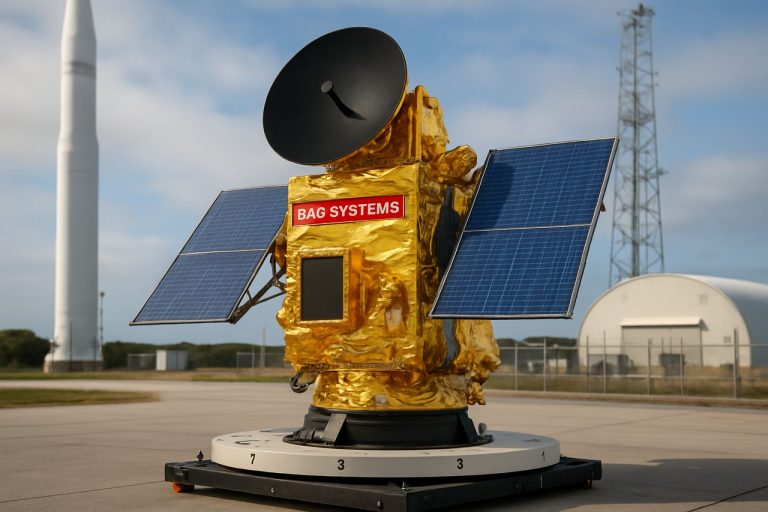
US Space Force Taps BAE Systems for Cutting-Edge Missile Tracking Satellites in $1.2B Deal—Here’s What’s Next
BAE Systems secures $1.2 billion to power US Space Force with advanced missile-tracking satellites—discover what this means for defense in 2025.
- Contract Value: $1.2 billion
- Target: Detect & track ballistic missiles and hypersonic threats
- Project Timeline: 4 years for satellites, 5 years for support
- Lead Contractor: BAE Systems
The US Space Force is doubling down on its mission to secure American skies. In a major leap forward for missile defense, the US Space Systems Command has awarded BAE Systems a whopping $1.2 billion contract to deliver next-generation missile tracking satellites, creating a powerful new shield in space.
The massive contract propels BAE Systems to the forefront as the main architect for the Resilient Missile Warning & Tracking—Medium Earth Orbit (RMWT-MEO) Epoch 2 program. Over the next four years, expect a flurry of activity as fleets of high-tech satellites head for orbit, with operations and support stretching well into the next decade.
What Makes These New Satellites Game Changers?
Each satellite in the upcoming constellation will come equipped with top-tier electro-optical/infrared sensors and advanced communications payloads. BAE Systems is leveraging its Trek bus—part of its Elevation spacecraft series—for unmatched payload flexibility and secure, robust communications.
Powerful onboard data processing allows these satellites to not only spot ballistic missiles but also to lock on to elusive hypersonic threats mid-flight. Advanced data crosslinks between satellites ensure seamless coordination and constant vigilance.
How Will the System Integrate With US Missile Defense?
The programme isn’t just about launching satellites. BAE Systems will develop a high-tech ground system for fully integrating the constellation with US missile defense networks. The ground segment covers everything from mission management to command and control (C2), turbocharging operational efficiency and rapid response in the face of evolving threats.
By delivering real-time mission data, the new system ensures American defense operators are never caught off guard—whether facing known risks or emerging dangers.
Why Is Missile Defense in Space So Critical for 2025?
With global threats evolving, speed and flexibility in missile tracking are more vital than ever. Hypersonic glide vehicles—capable of outmaneuvering traditional detection—pose a direct challenge to national security.
This latest contract cements BAE Systems’ role as a trusted partner for the Department of Defense and US Space Force. Earlier in 2025, BAE Systems was already tapped to develop a futuristic command and control system under the US Space Force‘s FORGE program.
For more on space defense technology, visit BAE Systems or explore the latest breakthroughs at NASA.
Q: What Does This Mean for the Future of US Space Security?
A: The relentless modernization of missile defense gives the US a decisive edge. With near-continuous data flow, integration with current defense systems, and resilience against advanced threats, these satellites form the backbone of tomorrow’s secure space domain.
How Can Defense Contractors Stay Ahead in 2025?
– Invest in agile, cost-effective satellite technology
– Prioritize data integration and secure comms
– Pursue public-private partnerships with agencies like Department of Defense
– Foster innovation for hypersonic and cross-domain threats
Ready to Transform National Security? Here Are Your Next Steps:
- Stay informed—sign up for defense industry newsletters and daily briefings
- Innovate rapidly—embrace modular platforms and resilient architectures
- Collaborate—seek partnerships for ground and space-based projects
- Apply now for the Airforce Technology Excellence Awards and highlight your breakthroughs
https://youtube.com/watch?v=eg1tlFbF99c
Don’t miss your chance to be at the forefront—nominate your team, stay alert, and shape the future of defense in space!



